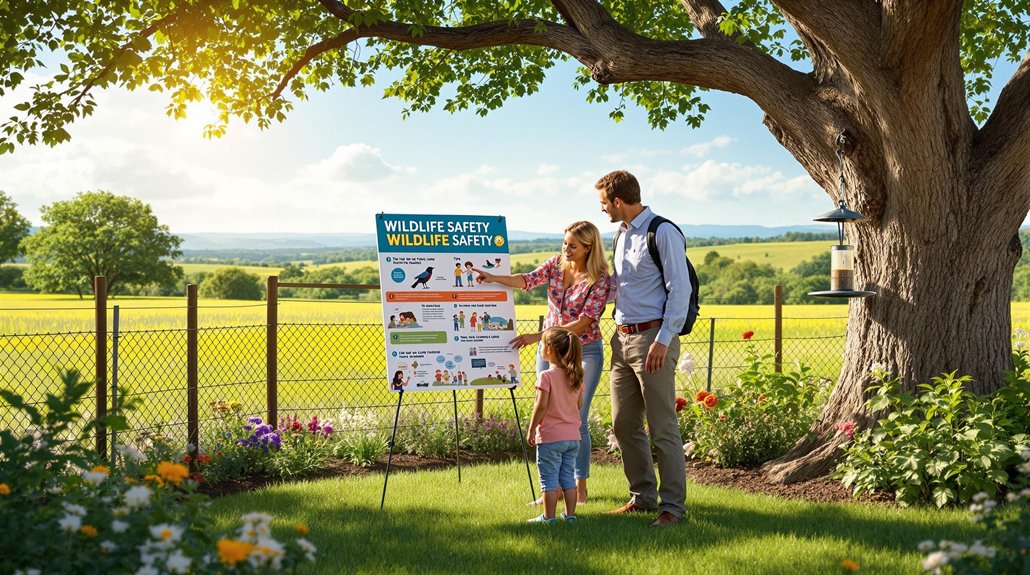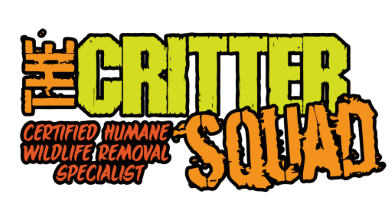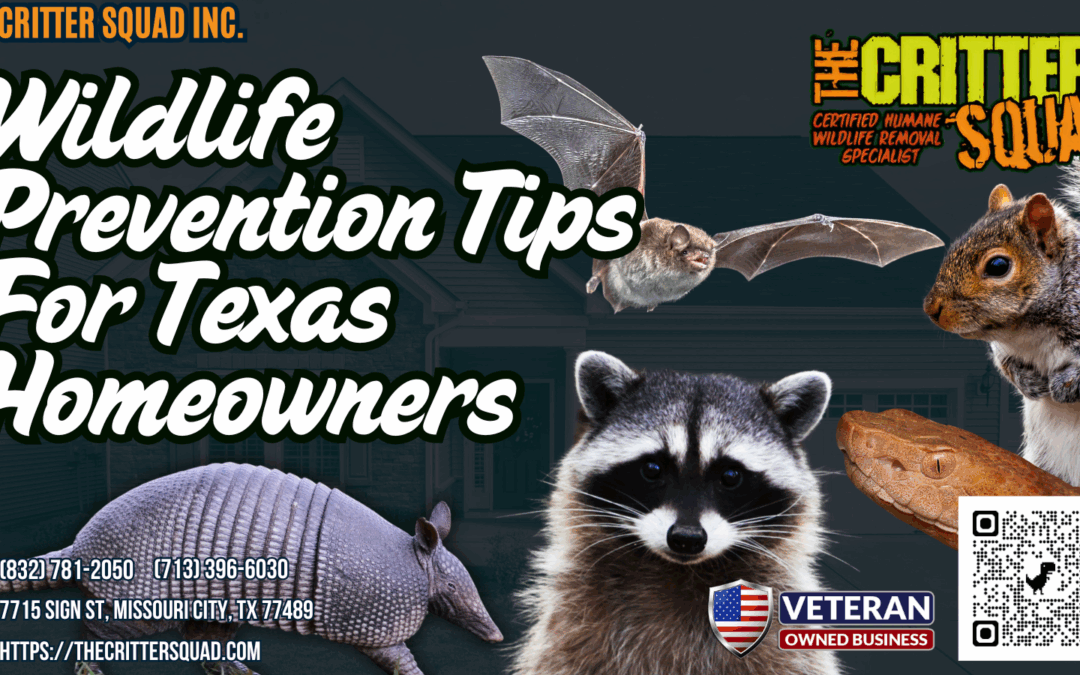Texas homeowners can take several steps to prevent wildlife from invading their properties. They should assess their yards for attractants, secure garbage and compost bins with tight-fitting lids, and install barriers like fences. Regularly inspecting for and sealing entry points is also important. Using natural repellents and educating family members on wildlife behaviors helps enhance safety. There are many more strategies to keep homes safe and maintain a balance with nature that will be explored further.
Key Article Highlights
- Inspect your property for potential wildlife attractants, such as standing water, dense bushes, and open nesting spaces.
- Secure garbage and compost bins with tight-fitting lids and store them in garages or sheds to prevent access.
- Install fencing or barriers using materials like wire mesh to block entry points and protect gardens from wildlife.
- Regularly check for and seal entry points around the foundation, windows, and doors to prevent rodents and other animals.
- Use natural repellents and visual deterrents to keep wildlife at bay while maintaining a safe environment for people and pets.
Assessing Your Property for Wildlife Attractants
When homeowners take the time to assess their property, they can identify potential wildlife attractants that might invite unwanted animals. Understanding wildlife behavior is key to this process. Homeowners should look for things that may draw animals closer, such as standing water, dense bushes, or food sources. A thorough property assessment includes checking for open spaces where animals could nest or hide. Recognizing how rats and other rodents explore nesting habits can help homeowners identify potential entry points and shelter areas. Additionally, being aware of rodent exclusion techniques can prevent future infestations effectively. Recognizing these attractants and understanding armadillo digging issues can help homeowners take targeted actions to reduce damage. By recognizing these attractants, homeowners can take steps to reduce the chances of wildlife visits. Simple changes, like trimming trees or removing debris, can make a big difference. This proactive approach helps maintain a peaceful environment, allowing homeowners to enjoy their space without the worry of unwanted visitors.
Secure Your Garbage and Compost Bins
Homeowners often overlook the importance of securing garbage and compost bins as part of wildlife prevention. Proper garbage storage and compost maintenance can keep unwanted animals away. Here are some simple tips:
Securing garbage and compost bins is essential for preventing wildlife encounters and maintaining a clean environment.
- Use bins with tight-fitting lids.
- Place bins in a secure area, like a garage or shed.
- Regularly clean bins to remove food residues.
Installing Fencing and Barriers
Although wildlife can be a beautiful part of nature, it is crucial to keep them at bay to protect homes and gardens. Installing fencing and barriers is a practical way to do this. Homeowners can choose from various fence types, such as wooden, vinyl, or chain-link, depending on their needs. Each type offers different levels of strength and visibility. Barrier materials like wire mesh or concrete can also stop animals from entering gardens. It is important to guarantee that fences are tall enough and buried deep enough to prevent digging. Regular checks for damage can help maintain effectiveness. By using the right fencing and barriers, homeowners can enjoy their outdoor spaces without unwanted wildlife interference.
Managing Vegetation and Landscaping

Fencing and barriers provide a strong defense against wildlife, but managing vegetation and landscaping is equally important for keeping animals away. Homeowners should consider how their landscape design can affect wildlife visits. Using native plants can create a beautiful yard while discouraging unwanted guests.
- Keep shrubs trimmed and away from the house.
- Avoid dense vegetation that provides shelter for animals.
- Use native plants that are less attractive to wildlife.
Identifying and Sealing Entry Points
Many animals can find their way into homes through small openings and cracks. Homeowners should perform an entry point inspection to spot these vulnerabilities. Starting with the foundation, they should check for gaps and holes. Windows and doors must also be assessed for proper seals. Attics and basements can be common entry points, so it is important to look in these areas too. Once they identify the openings, homeowners can use sealing techniques to close them off. Caulk works well for small cracks, while bigger holes may need wire mesh or foam. Additionally, considering humane bat removal methods can prevent unwanted wildlife from establishing themselves inside. Recognizing signs of bat nesting can help homeowners identify if bats have already taken residence. Employing wildlife prevention strategies such as blocking entry points is crucial for long-term protection. By sealing these entry points, homeowners can help keep unwanted wildlife out of their homes, allowing them to enjoy their space freely and peacefully.
Using Wildlife Repellents and Deterrents
When homeowners want to keep wildlife at bay, using repellents and deterrents can be an effective strategy. These methods can help maintain a peaceful environment while ensuring safety for both people and pets.
Using repellents and deterrents helps homeowners create a safe and tranquil space, protecting both people and pets from wildlife.
- Natural repellents: Many homeowners use scents like peppermint or vinegar to deter unwanted animals.
- Sound deterrents: Devices that emit noise can scare away critters without harming them.
- Visual deterrents: Items like reflective tape or fake predators can create a sense of danger for wildlife.
Educating Family Members on Wildlife Safety

How can families guarantee everyone knows how to stay safe around wildlife? The answer lies in family education. Parents should teach their children about common wildlife in Texas and how to react if they see an animal. It is important to explain that not all animals are friendly. Families can hold discussions about wildlife safety, covering topics like keeping a safe distance and never feeding animals. Role-playing different scenarios can help children remember what to do. Using simple language and clear examples makes learning easier. Families can also create a wildlife safety plan together, ensuring everyone understands what to do in case of an encounter. Recognizing opossum behavior and signs of their presence can help families respond appropriately. By prioritizing education, families can foster a safer environment for themselves and their pets.
Creating a Wildlife-Friendly Habitat Away From Your Home
Creating a wildlife-friendly habitat away from the home can benefit both homeowners and local wildlife. By making simple changes, people can create spaces that support nature.
- Plant native plants that provide food and shelter.
- Design pollinator gardens to attract bees and butterflies.
- Add water sources, like bird baths, for local animals.
These efforts help create a balanced environment. Native plants are easier to care for and require less water. Pollinator gardens encourage essential insects, which support the local ecosystem. By providing these natural spaces, homeowners not only enjoy a more beautiful yard but also help wildlife thrive. This connection to nature allows everyone to enjoy the freedom of a vibrant ecosystem right outside their door.
Knowing When to Call a Professional Wildlife Removal Service
Homeowners who enjoy a wildlife-friendly yard may sometimes encounter situations where animals come too close for comfort. It is important to know when to call a professional wildlife removal service. Recognizing signs of wildlife problems is key. If animals damage property, disturb pets, or pose health risks, it may be time to act. Choosing services that specialize in humane removal can help keep both the animals and the homeowners safe. Professionals have the skills and tools to handle wildlife safely. They can also provide advice on preventing future issues. By knowing when to call for help, homeowners can maintain their enjoyment of nature without unnecessary worry or danger.
Frequently Asked Questions
What Types of Wildlife Are Common in Texas Residential Areas?
In Texas, urban wildlife thrives like weeds in a garden. Common pests include raccoons, opossums, and squirrels, which adapt easily to residential areas, often seeking food and shelter in human spaces, creating challenges for residents.
How Can I Tell if Wildlife Is Visiting My Property?
To determine if wildlife visits a property, one should look for wildlife signs. Common indicators include tracks, droppings, chewed plants, and nests. Noticing these signs can reveal the presence of various animals nearby.
Are There Specific Seasons When Wildlife Activity Increases?
As the seasons shift, wildlife activity surges. Spring awakens nesting instincts, while autumn prompts foraging behavior. Understanding these seasonal patterns reveals the hidden rhythms of wildlife behavior, inviting curiosity and caution for those observing from afar.
Can Pets Attract Wildlife to My Yard?
Pets can attract wildlife to yards. Pet food left outside draws curious animals. These animals may come looking for food, impacting local outdoor habitats. Keeping pet food inside can help reduce unwanted wildlife visits.
What Legal Regulations Exist for Dealing With Wildlife in Texas?
In Texas, laws exist to protect wildlife, including regulations regarding nuisance wildlife. Homeowners must adhere to guidelines for handling these animals, ensuring their actions align with state wildlife protection laws to maintain ecological balance.

